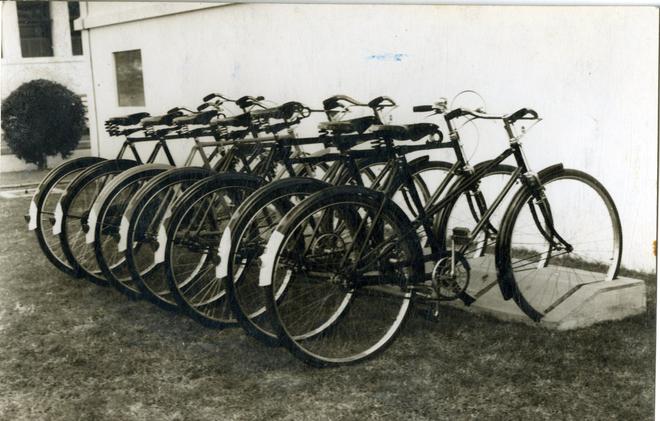
In the beginning of July 1938, the rear mudguards of all bicycles in Chennai started looking uniformly white, thanks to a sudden rush among cyclists to get a coat of white paint. The frenzy was triggered by a rumour that spread across the city in a matter of a few days that the government had introduced a new rule demanding white-painted rear mudguards.
Debunking the rumour, D.C.T. Cameron, the then Deputy Commissioner of Police (Traffic), Madras, according to a report published in The Hindu on July 12, 1938, said even actual orders issued by the authorities had never been so quickly and readily obeyed.
In 1955, the government had to issue a warning to cyclists to not ride abreast on the city’s roads as it caused obstruction to the other road users. These anecdotes indicate the popularity and pre-eminence bicycles had as a means of transport in Chennai, the city which is home to the first big bicycle factory, T.I. Cycles of India Ltd., in the country.
Struggling for space
The city’s cyclists, who once had to be warned not to obstruct traffic on the road, have now become almost an invisible lot, they have to wrestle for space on the roads, often risking their safety.
Despite the struggle, many still use bicycles as the primary mode of transport, sometimes out of habit but mostly because of economic reasons. For 59-year-old M. Chellappa, an overhead tank operator in Perumbakkam, it is both. He started cycling when he was 15, by renting cycles for 10 paise an hour. “We had a single bus service, P51, connecting Tambaram and Sholinganallur. So, we used to rent bicycles for going to nearby areas,” he says.
Mr. Chellappa bought a bicycle for ₹150 for daily commute after landing his first job in 1982 at a kitchen appliances manufacturing unit in Karapakkam. “That bicycle was in working condition until a few years ago. I have switched to a new one now. But I still have the old one at home. I don’t feel like junking it,” he says. He and his friends used to ride all the way to Marina Beach, more than 20 km away, and then roam around the city. “I was once caught by the police in Adyar since I had not lit the lamp in my cycle, which was mandatory then. I had to pay fine,” he says.
Convenient mode
A. Kalyani from Mandaveli is among the many women domestic workers who use bicycles for commuting to different houses to work.
“I have to travel around four to five kilometres. I cannot afford a motorbike. Hence, I am using a cycle,” she says. She adds that she prefers using the interior lanes to avoid mingling with the traffic on main roads. “Motorists incessantly honk at the cyclists sometimes. It is annoying,” she says.
The Chennai-based Citizen Consumer and Civic Action Group (CAG) recently did a survey of 480 livelihood or captive cyclists in the city. Over 75% of them earn less than ₹20,000 a month and cited the savings on transport as the key reason for using bicycles.
Around 60% of them said the behaviour of other motorists was the main issue since they speed without giving any space to the cyclists. Poor road surface, lack of cycling infrastructure and the proliferation of flyovers were among the other key issues they faced.
Cycling for leisure
Meanwhile, the city has witnessed an upsurge in the number of people, predominantly from the middle and upper middle income groups, taking up cycling for leisure and fitness. Some of them commute to work in cycles as well. The cycling bug has bitten many celebrities, which include Chief Minister M.K. Stalin, who cycles occasionally along the East Coast Road.
According to data collected by Strava, a popular service for tracking physical exercises, 18,255 people tracked their cycling in Chennai in 2021 and they made a total of 2.68 lakh trips. The two numbers were 39% and 80% higher respectively than the year before.
While this is a welcome trend, Sumana Narayanan, senior researcher - Road Safety and Sustainable Transportation at CAG, who did the recent survey, said there is a serious lack of data when it comes to cycling. She says there is no data on the number of livelihood and captive cyclists (who are unlikely to use apps like Strava), the roads they frequent, and the problems they face, which are necessary for effective intervention.
“Chennai adopted the Non-Motorised Transport Policy (in 2014). Have we assessed our progress on its implementation?” she asks. She says merely marking “cycle track” on a few roads, which seldom remain exclusive to cyclists, does not suffice. She says city needs a multi-pronged approach with measures like dedicated cycling tracks that are segregated from motorised transport, advanced stop lines, pilot studies in smaller areas to understand the issues, and educating the motorists.







